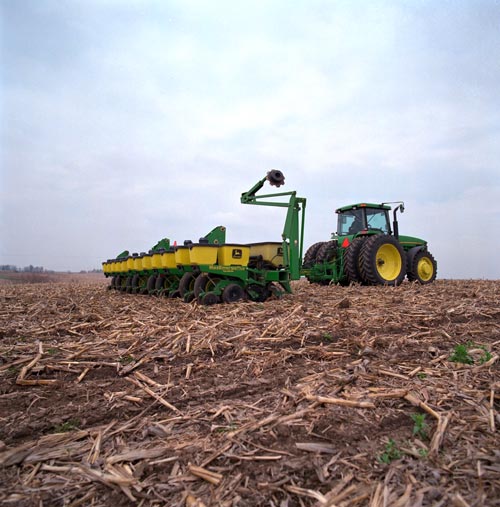
The success of the previous year’s crop tends to be a factor in what growers plant. The 2010 corn season went pretty well, so that should keep Mississippi’s acreage nearly the same this year.The market is also a factor, and that is prompting farmers to plant more cotton and to decrease corn and soybeans.
April 4, 2011

By the end of March, Mississippi growers were approaching the halfway point in planting this year’s corn crop, said Erick Larson, small grains specialist with Mississippi State University’s Extension Service.
They should complete planting by the end of April.
“The success of the previous year’s crop tends to be a factor in what growers plant. The 2010 corn season went pretty well, so that should keep Mississippi’s acreage nearly the same this year,” Larson said. “The market is also a factor, and that is prompting farmers to plant more cotton and to decrease corn and soybeans.”
The U.S. Department of Agriculture released its annual prospective plantings report March 31, and Mississippi producers are predicted to plant more cotton and corn this year. Corn acreage is forecast at 860,000, compared to 750,000 in 2010. Cotton will increase from 420,000 acres to 530,000 acres.
The report predicts soybeans, rice and hay will decline in acreage. The soybean crop, which is Mississippi’s largest row crop, will be 1.85 million acres, down from 2 million last year.
Rice is forecast at 200,000 acres, down from 305,000 acres. Hay, which seldom posts year-to-year changes, declined from 700,000 acres to 670,000 acres.
John Michael Riley, Extension agricultural economist, said the USDA report is consistent with trade expectations.
“For the most part, growers are swapping fields of rice and soybeans for fields of corn and cotton,” Riley said. “Mississippi rice acres are down 105,000, and soybeans are down 150,000 acres.”
Darrin Dodds, Extension cotton specialist, said prices are at all-time highs, and projections are favorable for the next two or three years.
“Prices are providing a strong incentive to continue planting cotton for a few years, especially if growers still have cotton equipment,” he said.
Tom Eubank of MSU’s Delta Research and Extension Center said the strong soybean market keeps farmers interested in that crop.
“Despite 2010 being an unusually hot and dry growing season, the fall harvest season was nearly ideal for soybeans, with very few problems reported in terms of soybean seed quality,” Eubank said. “A few growers have already put some soybeans in the ground (by March 31), but it’s still early. The optimum planting window for soybeans is between mid-April and early May.”
Nathan Buehring, Extension rice specialist, said the relatively significant decrease in rice acreage is mostly a reflection of an unusually large crop in 2010.
“Last year, we grew so much rice that we have abundant supplies in stock — the largest since the mid- to late ‘80s,” he said. Riley said the hay decrease of 30,000 acres is notable because there is normally no change.
“There seems to be a shift from hay and livestock production to row crops,” he said. “Marginal land that has not been viable for row-crop production in the past can be a better option at current price levels. Cattle production is not as profitable, especially when compared to grain crops.”
You May Also Like



